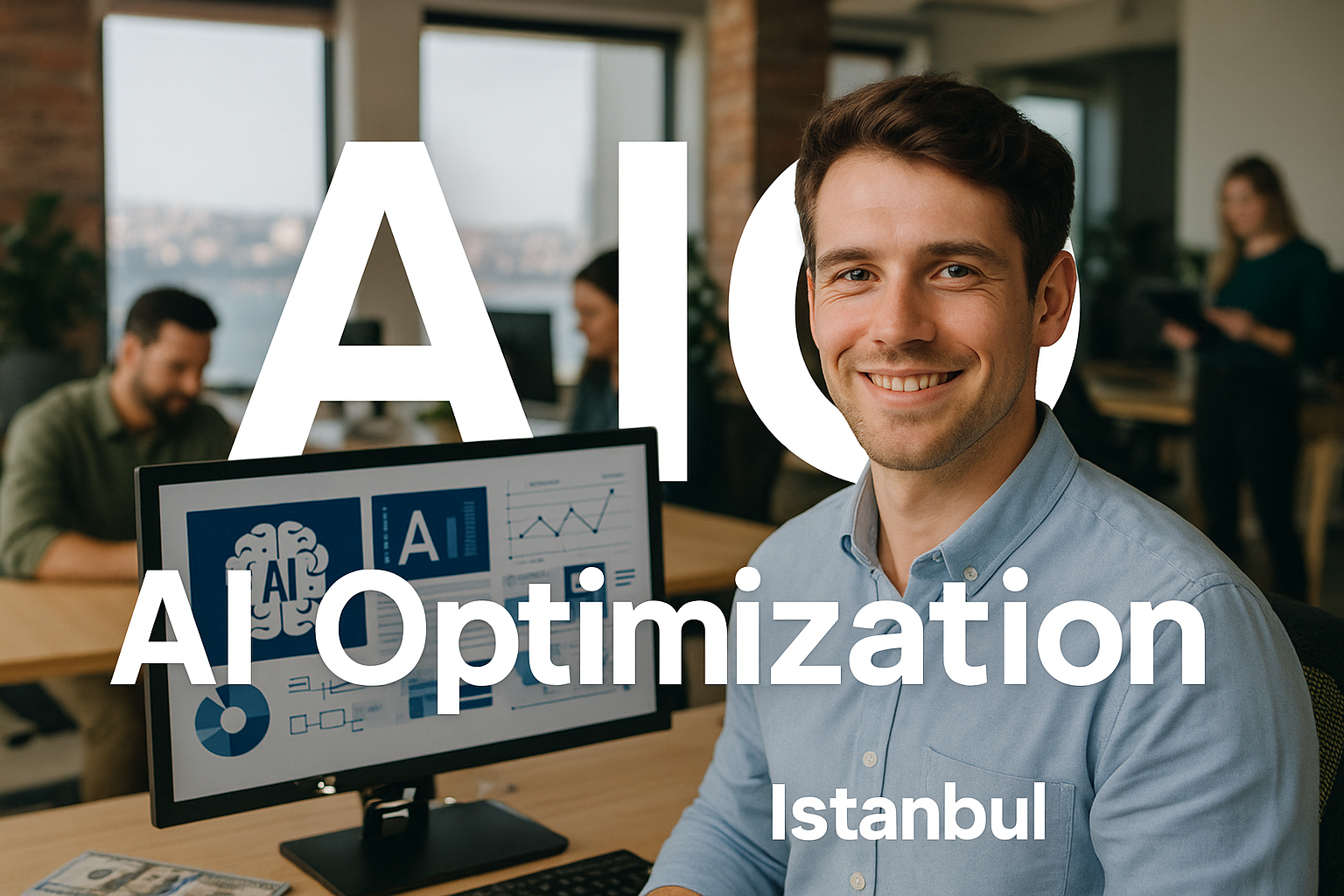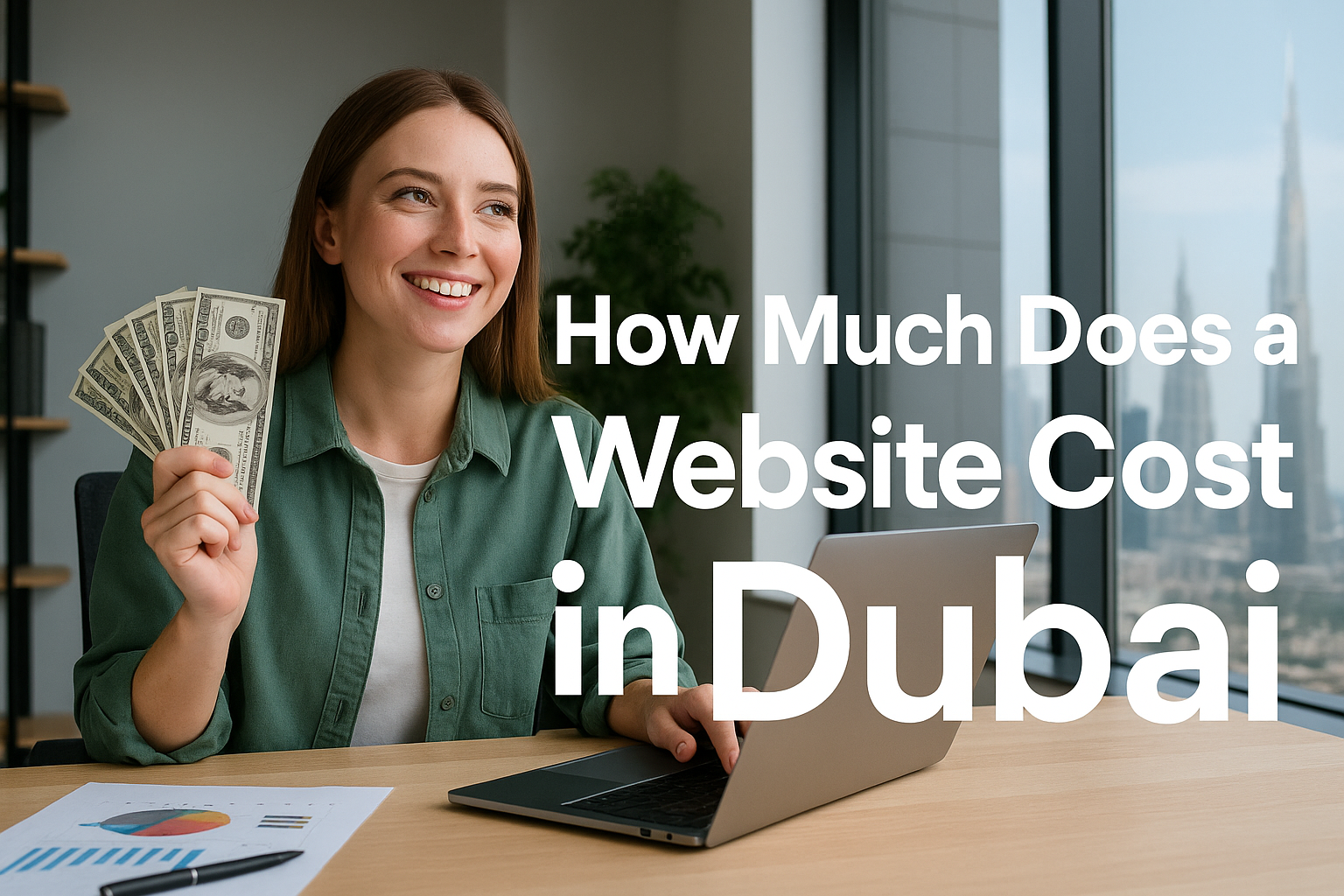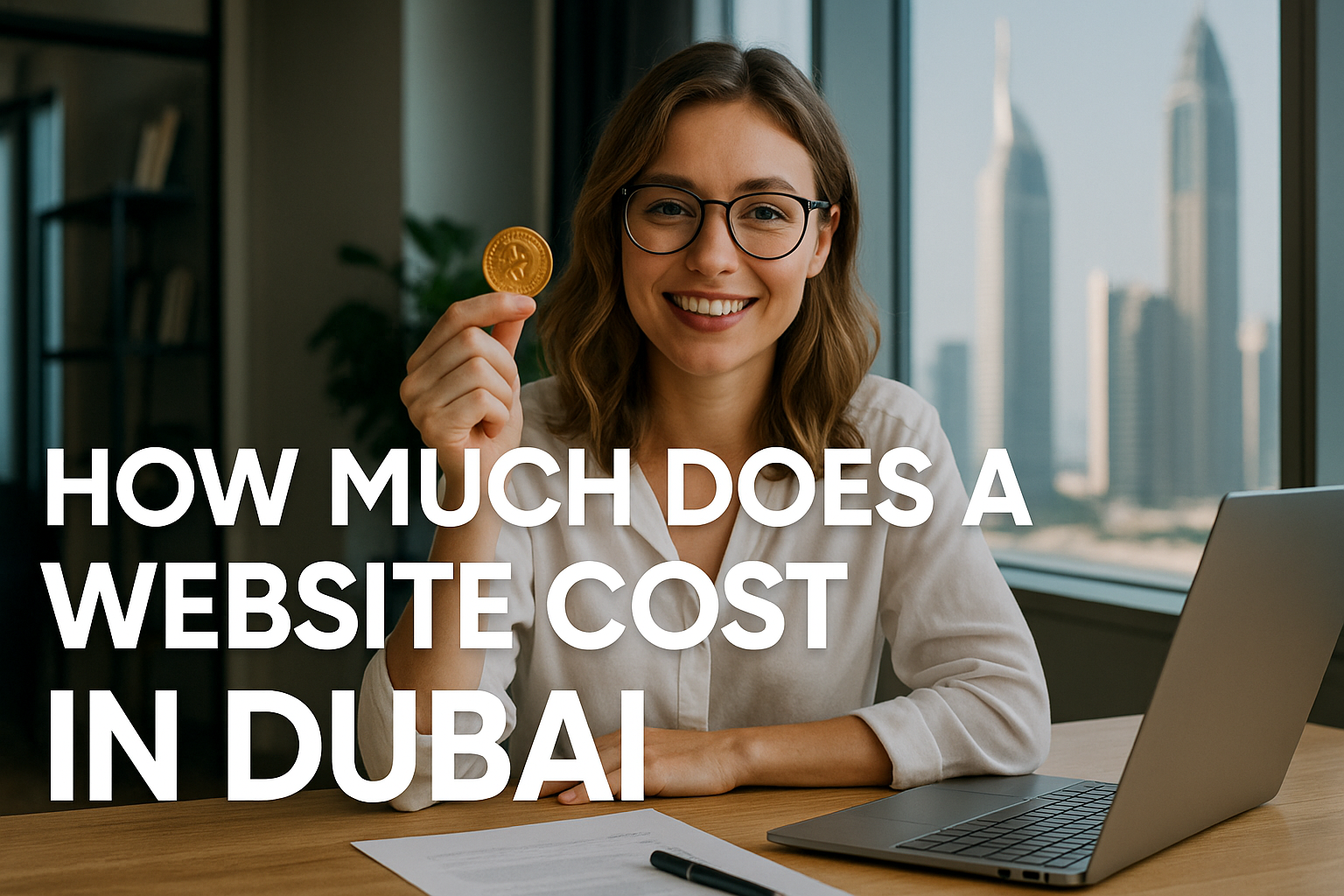What you reading
In 2025, the landscape of digital marketing is being redrawn by the rise of AIO (AI optimization)—the practice of making your website, content, and brand ready for both classic search engines and the ever-expanding world of AI-powered discovery. Unlike traditional SEO, which primarily focuses on ranking in Google SERPs, AIO (AI Optimization) goes further by optimizing your content for intelligent systems like ChatGPT, Google Gemini, Bing Copilot, Perplexity, Claude, and Meta AI. These systems don’t just list results—they generate answers. That means your brand needs to be present where answers are formed, not just where links are clicked. By implementing AIO (AI Optimization), you’re equipping your digital presence to show up in conversational queries, voice searches, and AI summaries—boosting both traffic and trust.
As tools like ChatGPT, Google Gemini, Bing Copilot, Perplexity, and SGE (Search Generative Experience) rapidly shape how users find and trust information, AIO is no longer just an advantage—it’s a necessity. Businesses now compete not only for clicks, but for mentions inside AI responses. So, what does AIO really mean? How does it differ from traditional SEO? What’s the real business value, and how do you get started? This deep-dive guide, packed with practical examples and answers to every question business owners ask, gives you the actionable roadmap to thrive in this new digital reality. If your content isn’t fine-tuned for generative engines, you risk losing ground to competitors who understand the rules of this new game. AIO (AI Optimization) bridges the gap between technical SEO and AI language understanding, making it a powerful tool for forward-thinking digital strategies.
What Is AIO (AI Optimization) and Why Does It Matter Now?
AIO, or AI optimization, is the systematic process of preparing your website and content to be understood, indexed, and recommended by AI-powered search engines, chatbots, and digital assistants—not just classic search platforms like Google and Bing. In contrast to traditional SEO that focuses on keyword targeting, metadata, and link building, AIO (AI Optimization) shifts the focus toward enhancing semantic clarity, factual consistency, and structured content formatting. It ensures your content is digestible not only by human users but also by large language models, voice assistants, and algorithmic AI agents operating in evolving search environments.
While SEO focuses on keywords, rankings, and human search intent, AIO expands the scope:
It targets how AI models “read” your pages, extract facts, and build trusted responses.
Through structured data, contextually relevant paragraphs, and declarative sentences, AIO (AI Optimization) helps machines confidently pull your content as part of rich AI-generated answers. This involves embedding accurate data in formats AI can parse—like schema markup, FAQs, or clearly stated definitions—thus enhancing your brand’s credibility in both visible and voice-search outputs. As language models like ChatGPT and Google Gemini evolve, so does the need for machine-readable authority signals embedded directly into your site.
It anticipates how users now ask conversational, intent-based, and context-rich questions.
AIO adapts your content for AI environments where questions are no longer just keyword phrases, but natural, layered inquiries like “What’s the best clinic near me that offers same-day appointments?” or “What are the pros and cons of switching to a plant-based diet?” By aligning your content tone and structure with these user behaviors, AIO (AI Optimization) helps your content surface as relevant, accurate, and useful—positioning you as a trusted source even when users never visit a traditional SERP. Related to this is conversational AI readiness, where your content mimics how humans speak and seek information in real life.
It makes sure your content can be cited, recommended, and shown by AI tools as authoritative answers.
Citation-friendly content isn’t just well-written—it’s factually sound, well-organized, and aligned with common search patterns across generative systems. AIO ensures your content adheres to structured formatting, uses primary-source language, and includes elements like timestamps, author credentials, and unique insights that reinforce trust. This is especially important in zero-click search environments where AI content generation tools choose which sources to highlight and which to ignore. Implementing AIO (AI Optimization) strategies increases the likelihood of becoming the default source in AI-driven summaries, voice answers, or assistant recommendations.
Why does it matter?
In 2025, more than 50% of high-intent product and service searches start in AI environments—not classic search boxes. Users are increasingly bypassing websites entirely in favor of direct answers from AI agents integrated into smartphones, smart speakers, and digital dashboards. If your business isn’t AIO-ready, you’re invisible where your best customers are now searching. Failing to adopt AIO (AI Optimization) means losing ground to competitors who are already shaping their content for relevance in these cutting-edge discovery channels. Just as mobile-first indexing revolutionized SEO years ago, AI-first optimization is the new frontier—one that rewards foresight, structure, and semantic excellence.
Core Principles of AIO (AI Optimization) for Websites & Brands
AIO isn’t about chasing algorithms—it’s about building future-proof trust and discoverability. In the era of AI-first indexing and conversational search, it’s about becoming the preferred source of answers for both users and intelligent systems. Here are the foundational steps:
1. Structured Data and Schema Mastery
AI and modern search engines rely on structured data (like Schema.org markup) to understand your website’s details: who you are, what you offer, where you operate, and why you’re credible. Structured data is the backbone of AIO (AI Optimization), enabling search engines and large language models to pull accurate and contextual answers.
Action Points:
-
Implement schema for services, products, reviews, local business, FAQs, and articles. These make your content machine-readable, which improves your chances of appearing in AI-generated answers and featured snippets.
-
Keep information (like address, hours, service areas) up-to-date and consistent everywhere online. Inconsistent NAP (Name, Address, Phone) data confuses both users and AI engines like Bard or ChatGPT when determining trust signals.
-
Use advanced schemas (HowTo, Event, JobPosting, etc.) where relevant. These not only enrich your search appearance but also increase interaction by surfacing your brand in AI-enhanced SERPs and voice-based interfaces.
2. Conversational, Fact-Based Content
AI models excel at extracting facts, lists, and clear explanations. Modern AIO means writing content that aligns with how people speak and search—especially with the surge of voice assistants and AI-integrated platforms.
-
Answers real user questions, using natural language. Think “How can I speed up my WordPress site?” instead of robotic keyword stuffing. Matching the conversational tone helps your content get featured by AI assistants.
-
Includes direct, referenced facts (numbers, dates, locations, testimonials). Incorporate relevant statistics or real case studies to increase credibility and train AI systems to associate your page with high-quality, reliable content.
-
Anticipates and addresses related queries with clear subheadings and concise lists. This improves crawlability, user experience, and makes your site the go-to for AI-generated summaries or quick answers.
3. E-E-A-T: Building Authority for AI & Human Users
Experience, Expertise, Authority, Trust (E-E-A-T) are essential in the world of AIO. As LLMs prioritize content backed by human insight and verifiable reputation, these signals become vital.
-
Include detailed author bios, credentials, and real business contact info. This signals transparency and reliability—two key traits that AI ranking systems weigh heavily.
-
Feature genuine testimonials, case studies, and media mentions. These elements strengthen your brand identity, which AI engines use to gauge credibility and influence content retrieval.
-
Keep content fresh and relevant—AI models favor recently updated information. Regular updates improve your ranking in both traditional search and AIO (AI Optimization) systems that prioritize recency.
4. Multimodal Content: Optimizing for Text, Images & Video
AI systems process text, images, video, and even audio. Strong AIO ensures your content is not just readable but contextually rich across every format—especially as multimodal models like GPT-4o and Gemini expand.
-
Images have descriptive, keyword-rich alt text and captions. Use this to train AI systems about visual content relevance, which impacts visual search and voice-driven results.
-
Videos are embedded with transcripts and schema. Adding JSON-LD markup and human-written transcripts increases your chances of visibility on AI-driven platforms like Google Discover and YouTube auto-summaries.
-
Important data is summarized in easy-to-scrape tables and bullet points. AI crawlers favor structured formats for extracting quick facts, so present your key value propositions in well-organized, skimmable formats.
5. Technical Health and Performance
Site speed, mobile usability, and secure protocols (HTTPS) are critical for both SEO and AIO. Fast, secure, and technically sound websites are preferred by both users and AI algorithms due to their seamless accessibility.
-
Regularly audit site performance (Core Web Vitals). Pages should load in under 2.5 seconds, and CLS (Cumulative Layout Shift) should remain minimal. Tools like PageSpeed Insights and Lighthouse offer AIO-aligned performance insights.
-
Fix crawl errors and broken links. Broken internal links and soft 404s not only hurt UX but also mislead AI crawlers during indexing and content association processes.
-
Ensure every page is easily accessible to both search bots and AI crawlers. Use logical internal linking, clear navigation, and avoid content hidden behind scripts or iframes to support AIO (AI Optimization) integrity.
6. Review and Reputation Management
AI tools now factor in reviews and public sentiment in their answers. Public perception and digital reputation feed directly into trust algorithms that power search suggestions and AI-generated recommendations.
-
Collect, monitor, and respond to reviews on Google, industry sites, and major platforms. Regular engagement signals customer care and responsiveness—key indicators of brand quality in AIO (AI Optimization) workflows.
-
Highlight positive feedback and resolve negative comments transparently. Public responses demonstrate openness and accountability, boosting trust both for human readers and AI summarizers that scan sentiment.
7. AI-Specific Content Strategies
Create FAQ sections with well-structured Q&A (and FAQ schema). Voice search queries often trigger structured FAQ snippets—perfect entry points for your site in voice assistant responses and AI-powered SERPs.
-
Publish data-driven case studies, “best of” lists, and local guides. These content types are favored by generative engines for answering location-based or comparison-type queries. Use a format that’s easy for models to extract and recombine in snippets or answers.
-
Monitor how your brand appears in AI search responses—and adjust accordingly. Track your brand mentions in ChatGPT, Google SGE, Bing CoPilot, and others to refine your AIO (AI Optimization) strategy over time.
Practical AIO Examples: How AI Optimization Works in Real Businesses
Imagine an Istanbul-based dental clinic. Traditional SEO might get it ranking for “implant dentist Istanbul.” But in the current landscape, that’s no longer enough. With AIO (AI Optimization), the strategy evolves into a multidimensional approach that not only addresses search engine criteria but also adapts to how generative AI platforms process and display information. AIO ensures that every piece of content is structured semantically, enriched with intent-matching formats, and aligned with how users interact with tools like Google’s SGE, Gemini, or Microsoft Copilot. This shift from keyword stuffing to meaning-driven content creation is at the heart of AI Optimization success.
The clinic publishes a long-form, conversational article answering common patient questions (“How long does a dental implant take?”), using clear lists, tables, and fresh testimonials. This content is not just keyword-rich—it’s user-centric, predictive, and structured for large language models (LLMs). By leveraging AIO, the article becomes a perfect match for natural language prompts used in voice search or AI chat. FAQ schema is embedded for instant extraction by Google and ChatGPT, ensuring visibility beyond the SERP. Service schema details clinic hours, address, and top-rated services—making the clinic show up as a cited answer in Gemini and Bing Copilot. The clinic’s reviews are highlighted and up-to-date, so AI platforms “see” its trustworthiness. AIO even helps synchronize Google Business Profile data with structured content on-site, bridging local SEO and AI visibility. Result: Not only does the clinic rank higher in classic search, but it’s also recommended in AI responses—capturing customers other clinics miss and redefining what digital presence means in 2025.
The Business Value of AIO (AI Optimization): ROI & Brand Impact
Why Invest in AIO Today?
| AIO Benefit | Classic SEO | AI Optimization (AIO) |
|---|---|---|
| Google rankings | ✅ | ✅ |
| Featured in AI/Chatbot answers | ❌ | ✅ |
| Voice search discoverability | ⚠️ | ✅ |
| Multi-modal (text, image, video) | ⚠️ | ✅ |
| Citation as trusted source | ❌ | ✅ |
| Enhanced E-E-A-T (authority) | ⚠️ | ✅ |
| Long-term brand visibility | ✅ | ✅ |
Businesses who invest in AIO now are not just future-proofing; they’re building an “unfair advantage” as AI-driven search continues to grow.
What’s Included in AIO (AI Optimization) Services?
AIO services go beyond classic SEO. They are built for a future where search is powered not just by keywords but by intelligent systems that interpret, summarize, and recommend content. In the age of generative search engines like ChatGPT, Gemini, and Copilot, AIO (AI Optimization) ensures your digital presence is fully aligned with how AI understands authority, intent, and structure. Here’s what a typical package should include:
Technical and AI-Readiness Audit
An in-depth review of your website’s backend code, structured data, server performance, and content layering to assess its readiness for AI engines. AIO (AI Optimization) audits evaluate factors like page indexing for zero-click results, rendering compatibility with AI crawlers, and semantic markup completeness. This is not just about fixing broken links—it’s about preparing your site to be seen and cited by next-gen platforms.
Full Schema Markup Implementation
Structured data is the foundation of AIO (AI Optimization). Implementing JSON-LD schema for articles, products, services, reviews, and FAQs gives AI models a machine-readable format of your content. This increases your chances of being used in direct answers, featured snippets, and voice-based results. Comprehensive schema boosts relevance in both search engines and large language models processing billions of queries daily.
Conversational Content Strategy
Search has become more natural, question-driven, and context-aware. AIO (AI Optimization) focuses on building content frameworks that reflect real user queries and semantic relationships. This includes anticipating follow-up questions, using natural tone and transitions, and aligning headlines with AI understanding of topical authority. The goal is not just to rank—but to be referenced in conversational results across devices and assistants.
AI & Human-Optimized Blog Posts, Guides, and Landing Pages
Every asset is crafted for dual consumption—AI bots and real readers. AIO (AI Optimization) ensures that your content is scannable by machines while staying compelling to humans. Blog posts use LSI keywords, structured lists, and factual statements favored by AI engines. Guides and landing pages are designed with clean hierarchy, strong internal linking, and content density that supports AI-generated summaries or recommendations.
E-E-A-T Authority Enhancements
Google’s focus on Experience, Expertise, Authoritativeness, and Trustworthiness is amplified in AIO (AI Optimization). Your site is structured to demonstrate credentials, source transparency, author bios, and trust signals. From doctor bios on medical websites to company credentials for B2B services, E-E-A-T buildout is critical for earning AI-driven trust and higher semantic relevance scores.
Ongoing Monitoring for AI/Chatbot Citations
Tracking mentions and citations across AI-generated results is a core function of AIO (AI Optimization). This includes monitoring LLM outputs, AI snapshot usage, and direct sourcing within chatbot responses. Regular reviews ensure that your content remains part of the generative knowledge graph, and that outdated pages are refreshed to maintain visibility in dynamic AI rankings.
Reputation and Review Management
Generative systems factor in sentiment and review volume. AIO (AI Optimization) services manage customer feedback, highlight high-quality reviews through structured markup, and actively encourage satisfied users to leave input. Positive sentiment in third-party platforms like Google, Trustpilot, or industry directories increases your site’s eligibility for AI recommendations and trustworthy rankings.
Performance and Accessibility Fixes
AI engines prioritize fast, accessible content. AIO (AI Optimization) involves removing code bloat, improving Core Web Vitals, optimizing media delivery, and ensuring WCAG compliance. These steps enhance your site’s machine-readability, mobile-first responsiveness, and long-term ranking potential—not just in search engines but in AI-driven user experience assessments.
Transparent Reporting (classic and AI rankings)
Monthly reports reflect both traditional KPIs (impressions, clicks, keyword rankings) and new AI-specific metrics like LLM citations, chatbot mentions, and AI snapshot visibility. AIO (AI Optimization) transparency gives your team a clear roadmap—what’s working, what’s not, and how AI sees your domain today.
| Service Level | Monthly Price (USD) | Features |
|---|---|---|
| Basic | $1200 | Technical audit, schema basics, 2 blog posts, review monitoring |
| Growth | $2500 | All Basic + advanced schema, 4 blog posts, AI content testing, monthly reporting |
| Elite | $4000+ | All Growth + multi-modal content, full E-E-A-T buildout, ongoing AI tracking |
Actual pricing depends on business size, industry, and current AI readiness. Some enterprises may require additional AIO (AI Optimization) layers such as fine-tuned LLM prompts, in-house training content, or multilingual semantic optimization. These services are tailored for businesses serious about building visibility in the next generation of digital discovery.
How Does AIO (AI Optimization) Impact Small Business vs. Enterprise?
For Small Business
-
Levels the playing field: Even small shops can earn citations in AI results with the right approach.
-
Local authority: AI-powered map and “near me” searches now drive more foot traffic and calls.
For Enterprise
-
Scales reputation: AIO strengthens global brand signals and reputation for hundreds or thousands of locations.
-
AI brand safety: Proactive monitoring prevents misinformation and negative sentiment in AI responses.
AIO, SEO & Local SEO: What’s the Difference & Why Combine Them?
-
SEO is about ranking your website on Google and Bing for targeted keywords.
-
Local SEO ensures your business is visible for city, region, and “near me” searches.
-
AIO prepares your website and brand for all search environments—classic, local, and AI-powered—ensuring you’re recommended, cited, and trusted everywhere.
A future-ready digital strategy always includes all three.
AI Search and User Behavior: Why AIO Is the Future
Users are now searching by voice, chat, and in natural language—not just with keywords. AI tools interpret context, compare sources, and prioritize trustworthy, well-structured answers.
Brands who ignore AIO risk becoming invisible as the shift to AI-powered search accelerates.
Why Choose Our AIO Services? (Differentiators & Consulting Approach)
-
Proven Results: Real case studies in competitive markets (Istanbul, Dubai, London).
-
AI-First Strategy: Every project includes classic SEO, advanced schema, and AI content monitoring.
-
Hands-On Consulting: We audit your brand’s full digital footprint—classic and AI environments.
-
Personalized Roadmaps: Strategies tailored to your business goals and AI readiness level.
-
Education & Partnership: We teach your team how to maintain AI visibility as algorithms evolve.
Get a free AIO readiness audit and strategy session with our experts—future-proof your brand today.
Frequently Asked Questions
What is AIO (AI optimization) and how does it work?
AIO is the practice of preparing your website, content, and brand for both traditional search engines and AI-powered discovery platforms. This means using advanced schema, conversational content, and authority signals so AI models like ChatGPT and Gemini can understand, cite, and recommend your business.
Is AIO just a new name for SEO?
No. While SEO focuses on classic ranking signals for Google and Bing, AIO expands to include AI-specific optimization—ensuring your content is recommended in AI chatbots, voice assistants, and generative search results.
How long does it take to see results from AIO?
Early improvements (like schema-powered features) can be seen within weeks, but substantial AIO visibility—such as AI citations or recommendations—often takes 3–6 months of consistent, data-driven work.
Can AIO benefit small businesses or only large brands?
AIO is a game-changer for businesses of all sizes. Small businesses can win local and AI-driven searches, while large brands can manage reputation and maintain top visibility across multiple markets and AI environments.
How do I measure AIO success?
Track both classic SEO metrics (rankings, traffic, conversions) and new AI metrics—such as how often your brand appears in ChatGPT or Gemini answers, or is cited in voice search.
What is the investment for AIO services?
AIO service costs depend on your business size, industry, and goals. Basic packages start around $1,200/month, while growth and elite packages include advanced AI monitoring and content strategies, scaling up to $4,000/month or more.
Conclusion
AIO (AI optimization) is the foundation of future-proof digital marketing in 2025. As search, chat, and user behaviors evolve, your business must be ready for discovery in both classic search and AI-powered results. Smart brands that invest now will win the next wave of growth—connecting with customers, earning trust, and building lasting authority.
Ready for the next era of search?
Contact us for your free AIO audit and custom strategy.
This article was last updated on July 4, 2025.





